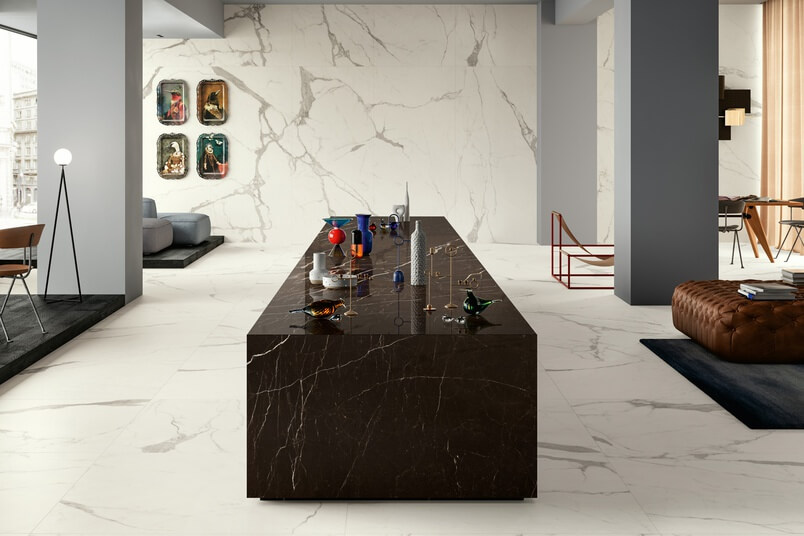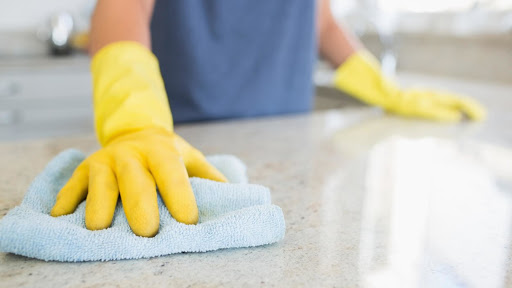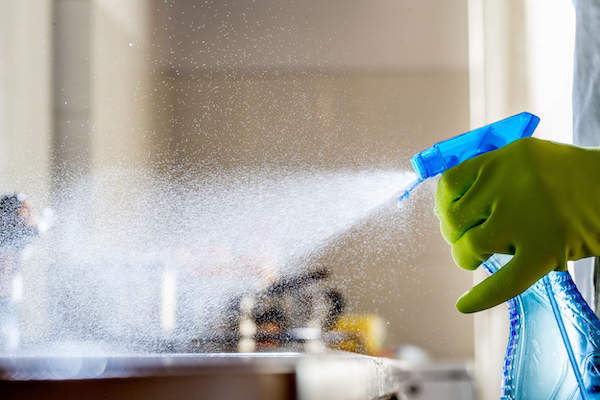Methods and easy ways to remove stains from kitchen tiles
No matter how often you clean stains and molds from your tiles but it will still frequently appear because they are caused by various types of bacteria. There are many reasons why stain-causing microbes could initially develop on your ceramics, sort of a rise in temperature, causing humidity and moisture that bacteria thrives off, or food and drink spillages that leave behind microbes on ceramic floors and countertops. However, bacteria are all around us, and stopping it from coming in touch together with your ceramics is nearly impossible.
How to avoid stains on ceramic tiles within the kitchen- Mop your ceramic tiled floor a minimum of once every week with extremely popular water. Wipe up any food or drink spillages as quickly as possible to avoid them settling, and ideally, wipe the surface with an antimicrobial cloth afterward.
If you have stains and molds that won’t wipe away, try mixing half a cup of vinegar with a gallon of water and continue to mop the floor as usual. Rinse the ground with warm water after you’ve cleaned the stain and take away all of the liquid from the tiles (source). You’ll get equivalent results using this method for ceramic wall tiles and ceramic kitchen countertops.

Bathroom cleaning
Try to keep the room ventilated. A bathroom fan is ideal for this as it can keep the room from becoming too humid, which is what bacteria love. Wipe the ceramics down a minimum of once every week with a specialized cleaning solution to make sure stains and molds are unable to develop. If you’ve got mold on your bathroom tiles that won’t wipe off, first confirm you’ve aired out your bathroom as a high moisture level makes mold almost impossible to get rid of. Wiping the tiles with a premade solution of 10 percent bleach and 90 percent water should remove most of the mold. For particularly tough stains, try mixing an answer of 25 percent bleach and 75 percent bicarbonate of soda during a cup. Always test the answer on a little section of your ceramic tile before you tackle the mold.

Antimicrobial protection tiles
Antimicrobial ceramic tiles are very useful. If one doesn’t have, make sure you include them in your house ahead whenever you choose to replace or redecorate your floor tile. You can purchase ceramic tiles which have antimicrobial protection built into them that are designed to inhibit the expansion of stain and mold-causing microbes on their surface. This technology is made in at the purpose of manufacture and doesn’t wipe off or wash away. You’ll find many styles and designs of antimicrobial protected ceramic tiles from various manufacturing brands. As the technology works to inhibit the expansion of stain and mold-causing microbes, your ceramic tiles are kept hygienic for extended, and stains and molds are less likely to occur.

Daily disinfection sprays
Think beyond just wiping down your countertops and tables to include daily cleaning of things like light switches, doorknobs, remotes, hard-backed furniture, phones, appliance & cabinet handles, desks, toilets, and sinks. You’ll want to hide any surface in your home that’s frequently touched by multiple relations. If you share things like laptops, keyboards, or tablets, be sure to add them to the cleaning list.
The key to keeping your ceramic tiles freed from stains and mold is regular and efficient cleaning. Simply wiping down your ceramics often with predicament is not enough often, except for tough stains, try purpose-built cleaning liquids, or use ceramic tiles that have antimicrobial protection inbuilt.

Special cleaning techniques
Cleaning to eliminate an epidemic takes quite just a wipe down with a wet cloth. For surfaces that are visibly dirty, you ought to first clean the dirt them with detergent or soap and water. Next, you’ll want to disinfect the surface using an efficient cleaning solution. This includes the most common EPA-registered household disinfectants, diluted household bleach solutions, and alcohol solutions with at least 70 percent alcohol. Once you spray the disinfectant, leave the surface wet for a few minutes before wiping away. Most cleaners have a time frame listed on the bottle, but many people neglect this step.

(Image Courtesy: Trusty Joe: https://trustyjoe.com/home-
Daily washing and chores
Any item that can safely be laundered should be washed, especially if someone in your home is ill. In addition to clothing, this can include things such as rugs, bedding, towels, and pillows. Items should be washed within the warmest appropriate water setting consistent with the manufacturer’s instructions and dried thoroughly. If someone in your home has contracted COVID-19, it’s best to wear disposable gloves when handling any laundry they need had contact with and discard them after each use. You will also want to disinfect any clothes hampers that have contained clothing from an ill person, or consider using a disposable liner.

Enjoyed Reading Above Article?
We are sure you will surely like our other articles too.
- Tips for Selecting Tiles
- Tile Trends for Spring & Summer 2020
- Best Floor Tiles Applications 2020
- Trending Tiles for Kitchen Backsplash
- Best Tile Laying Tips & Tricks 2020




GIPHY App Key not set. Please check settings